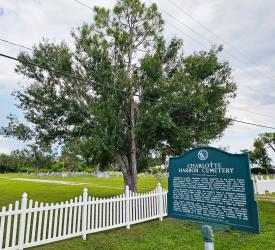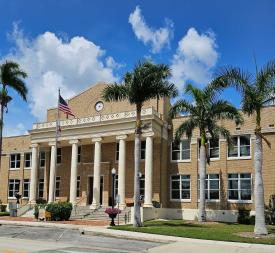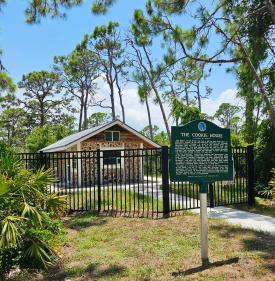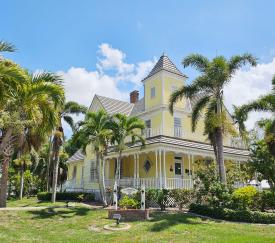Charlotte County was established in 1921, but the history of the area dates as far back as the 1500s, when the native Calusa Indians inhabited the lands. Punta Gorda first appeared on a map in the 1850s and Englewood was platted in the 1890s. Port Charlotte development skyrocketed in the 1950s.
There is over a century of rich heritage to be explored throughout Charlotte County. Although modern-day development is all around us, you don’t have to look far to find many of our area’s historic hidden gems. Here are a few we recommend exploring.

Charlotte Harbor Cemetery
Established in 1879
4410 Church Street, Port Charlotte, FL 33980
The Charlotte Harbor Cemetery is the oldest known cemetery in Charlotte County, and is where many of the area’s early pioneers and leaders were laid to rest. Despite being damaged by numerous hurricanes over the years, the grave markers are continually repaired and renewed, and the cemetery is still active today.
Placida Bunk House
 Built in 1907
Built in 1907
1688 Gasparilla Road, Port Charlotte, FL 33981
During the heyday of railroad transportation, the Placida Bunk House was built by Charlotte Harbor & Northern Railroad to house their employees, the early settlers of the Placida area, in the 1900s. The building is constructed of Florida yellow pine and has stood the test of time, weather, and neglect. Today, the landmark has been moved from its original location to the Cape Haze Pioneer Trail, where it stands as a trailside stop and interpretive center for local history.
Charlotte County Courthouse
 Dedicated March 20, 1928
Dedicated March 20, 1928
118 West Olympia Avenue, Punta Gorda, FL 33950
Charlotte County was established in 1921, after 34 years of the citizenry pushing to divide DeSoto County, and Punta Gorda was the new county seat. Before purchasing two lots downtown and hiring St. Petersburg architects to design the grandiose building that stands today, the Board of County Commissioners originally met in rented quarters. After a period of closure, the courthouse was restored to its 1928 appearance and reopened in 2005 in an effort to preserve this important historical landmark for public use.
The “Cookie House”
 Built in 1931
Built in 1931
2300 Placida Road, Englewood, FL 34224
Named for its unique log "stovewood" construction, the “Cookie House" was built by the founder of the Bass Biological Laboratory and Zoological Research Supply Company, John Foster Bass, Jr. The building was Bass’s office and laboratory, where biologists and zoologists studied both marine and land animals between 1931 and 1944. The facility eventually grew into today’s Mote Marine Laboratory. This cabin is the only one of its kind in Florida and was relocated to Cedar Point Environmental Park in an effort to ensure its preservation.
The A.C. Freeman House

Built in 1903
311 West Retta Esplanade, Punta Gorda, 33950
The A.C. Freeman House was built by Augustus Freeman in the Queen Anne style. The home was added to the National Register of Historic Places in 1987 and was moved to its current location at the base of the Gilchrist Bridge in 2006. Although the house is temporarily closed for restoration, it’s worth a trip to appreciate the charming exterior, and to explore the sculpture in the front yard:
Welcoming visitors to Punta Gorda is Calostimucu, one of artist Peter Toth’s “Whispering Giants." This amazing sculpture is one of this gorgeous little town's eccentric and intriguing landmarks.




